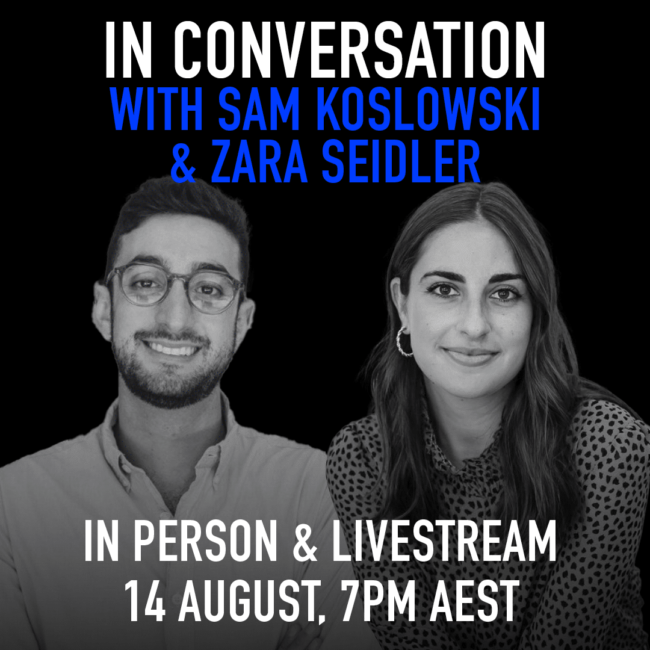
Defining mental illness – what is normal anyway?
Opinion + AnalysisHealth + Wellbeing
BY Anke Snoek The Ethics Centre 22 SEP 2015
The fact that mental illness remains poorly understood is not particularly surprising. Even the authoritative Diagnostic and Statistical Manual of Mental Disorders struggles to reach a defensible definition – and it’s in its fifth edition!
Mental illness is often perceived as a chemical imbalance in the brain. This certainly accounts for an element of mental illness, but not all of it. We need to recognise that our definitions of illness are determined as much by our interpretations of those physical or mental changes as they are by the changes themselves.
We define illness based on whether a physical or mental change is incompatible – that is, maladaptive – with a person’s environment. Because our environments are both social and physical, our definitions entail value judgements of how an individual should behave.
The late Oliver Sacks described an island on which hereditary total colour blindness meant the majority of the population were born colour-blind. As such, communal practices reflect the needs of the majority – colour-blind people. The community is most active at dusk and dawn because the light at those times provides the best vision. Non-colour blindness is maladaptive on the island because social practices are designed around colour blindness.
This highlights the cultural influences involved in defining illness. In the case of mental illness, the normative element – what society sees as acceptable or unacceptable – is often more controversial and difficult to identify.
Each era tends to have a mental illness du jour, which seems to emerge as a product of social changes and the incompatibility of certain behaviours with those changes. One era’s shaman is another’s schizophrenic.
In the 1960s a movement called “anti-psychiatry” emerged under the influence of French philosopher Michel Foucault. The movement critiqued the assumptions underlying our concept of mental illness.
Anti-psychiatrist Thomas Szaz considers a person who believes he is Napoleon. To diagnose a disorder, the clinician would need to prove the patient is not Napoleon. Because Western society does not tend to embrace the idea of reincarnation, the man’s belief is maladaptive to his environment. But it would not be so everywhere. Societies with a firm faith in reincarnation, for instance, may not see the man’s beliefs as evidence of mental illness. John of God, a faith healer in Brazil, claims over 20 entities including King Solomon use his body as a healing vessel. Rather than being institutionalised, he is venerated.
In these cases social perception seems to be influencing our definitions of mental illness. Many will argue that the illnesses themselves still exist, but that cultural beliefs simply lead to a failure to diagnose. This may be true, but other cases are less clear. In some situations, culture itself may be the cause of mental illness.
Take the sculptress Camille Claudel. She decided to pursue a career in arts – an unusual decision in the 19th century. Claudel fell in love with the pre-eminent sculptor Auguste Rodin. She became his lover, and they started working together.
Claudel rose from his student to his equal, but Rodin’s reputation distracted from her own achievements. Over time, this led to feelings of exploitation, and paranoia. She was forcibly admitted to a mental institution, where she lived for 30 years.
In a letter, her brother explained to her, “genius doesn’t become women”. Was Claudel suffering a psychological illness, or reacting in the way we’d expect of someone continually overlooked and exploited?
The story of “hysteria” is a less tragic case. In the 19th century, European women began to challenge oppressive, patriarchal value systems. They became depressed, unruly, and threw tantrums. Sexual adventures and explorations were considered symptoms of hysteria.
Some believed hysteria to be a symptom of women’s maternal yearnings. Later, Sigmund Freud suggested hysteric women were sexually unfulfilled, so the prevailing treatment for hysteria became the massage of female genitals by doctors – physician-assisted masturbation.
Of course, we now know hysteria isn’t real. The diagnosis pathologised – made abnormal – women’s reasonable expectation for political freedom and sexual autonomy.
This highlights the fact that each era tends to have a mental illness du jour, which seems to emerge as a product of social changes and the incompatibility of certain behaviours with those changes. One era’s shaman is another’s schizophrenic.
Joan of Arc’s claims to hear the voice of God weren’t widely disputed. Today, we’d suspect she was in need of psychological intervention. Clare of Assisi lived an ascetic life to honour God. She spent the last 27 years of her life in bed, too weak to move. Today, she’d be treated for anorexia nervosa – instead, she was named as a saint.
What is our mental illness du jour? Dutch scientist and author Trudy Dehue describes a “depression epidemic”. She argues many cultures today fail to allow for the possibility people might not always be happy. Social norms make being happy a kind of imperative – “thou shalt be happy”.
The identification of new disorders and increasing diagnoses of previously uncommon ones can reveal social changes. For instance, less play-oriented modes of education may make ordinary childhood spontaneity seem deviant. Increasing rates of ADHD diagnosed among children might have less to do with behavioural problems in children and more to do with our expectations of both them and their attention spans.
That’s not to say mental illness isn’t real, but what we define as a mental illness doesn’t develop in a vacuum. The medical system has a great deal to offer the mentally unwell. We could further support them by acknowledging how our own assumptions of what constitutes ‘normal’ influences our attitudes toward mental illness.
Ethics in your inbox.
Get the latest inspiration, intelligence, events & more.
By signing up you agree to our privacy policy
You might be interested in…
Opinion + Analysis
Health + Wellbeing, Relationships
Easter and the humility revolution
Opinion + Analysis
Health + Wellbeing, Relationships
Academia’s wicked problem
Opinion + Analysis
Health + Wellbeing, Relationships
Moral fatigue and decision-making
Opinion + Analysis
Health + Wellbeing, Relationships




